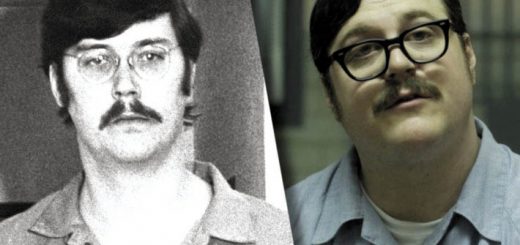Music documentary takes artistic look inside Feist’s world
by Edward Osborne

Photo courtesy of minxsociety.com. Look At What The Light Did Now is a documentary on Canadian singer-songwriter Feist. It presents us with diverse and artistic content that offers more than the usual tour or artist-oriented documentary.
Look At What The Light Did Now is the spellbinding story of iconic Canadian singersongwriter Leslie Feist. For anyone who has been caught humming one of Feist’s catchy singles or for the rabid fan who closely guards their copy of The Red Demos, this documentary delivers in loads. The opening credits alone are worth the price of admission. The analog construction of words using light and shadow make for an amazing and unusual opener. The film itself is comprised of equal parts interview and artistic cinematography. There are plenty of blurred and muted images interspersed with shocks of sound. It is a technique that fits the indie-pop vibe, with long sequences of photographs and art with various musical sound bites.
The key period of the story is set during Feist’s explosive rise between the releases of Let it Die in 2004 and The Reminder in 2007. This is not just a tour documentary. Look At What The Light Did Now shares Feist’s methods of composing and recording, along with the creation of album art, the filming of music videos, and the tour process itself. It takes a while before we see an interview with Feist on camera but when we finally get to see her, she provides interesting conversations beyond the usual “I’m really happy and creative” scheme that usually appears in these sorts of artist-oriented documentaries.
Special care is given to the astonishing shadow puppetry done by Clea Minaker during The Reminder tour. Feist talks about her discomfort with the thirty feet of blank space above her while she performed onstage and how Minaker was brought on as another member of the band to create images to project into that previously blank space. The film mainly portrays people around Feist who influence her and are influenced by her. The interviews are wide ranging, and they all add value.
It seems as if every person on tour was set in front of a camera for an hour to chat about the Canadian icon. There is a particularly candid moment where Dianne Montgomery — a onetime merch-girl who became one of the shadow artists, and who works with Minaker —discusses whether she calls her boss “Feist,” as per her stage name, or by her first name. There are portions of the film that feel like a concert recording as we watch the band perform on stage for a song or two. Beyond Feist’s rise in popularity, there are all kinds of interesting sub-narratives being told in the film.
There is an almost erotic interplay between Clea Minaker and Feist when they compliment each other and discuss the nuances and interaction required to perform together. We learn about Chilly Gonzales who played virtually every instrument on Let It Die. He calls himself a “comfort creator.” While it’s not explicit, we get a sense that he feels hurt or sidelined for the larger production of The Reminder. Gonzales also provides archive footage where Feist sings backup vocals at a cramped hiphop show. The iPod commercial featuring “1 2 3 4” also makes an appearance. The commercial’s director, Patrick Daughters, is a delight on camera as he talks about film stunts and angry letters to Apple CEO Steve Jobs that are genuinely funny. Simone Rubi is the visual artist behind the album cover and liner notes of The Reminder.
She also created the notable credits for Look At What The Light Did Now. There is a full three-minute sequence featuring thousands of her art concepts for The Reminder. While it might sound like dead air, the flash frame of imagery is actually a designer’s delight, offering snippets of what might have been. Her work with thread and shadow seem to ally themselves with Minaker’s shadow-play. Look At What The Light Did Now never lingers too long in one space or on one interview, and as a result, it is constantly giving something new to the audience. It delivers far more than the average musician documentary, packing a little bit of everything into its 77-minute runtime.
Look At What The Light Did Now will be screened in Calgary one night only, Nov. 24 at the Cantos Music Foundation. Advance tickets are available at www. cantos.ca or at the door subject to capacity. The DVD will be available Dec. 7th.




